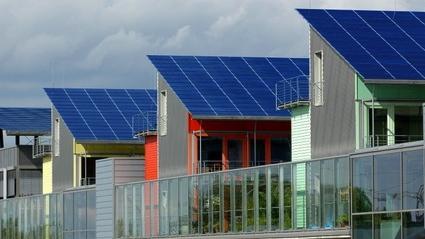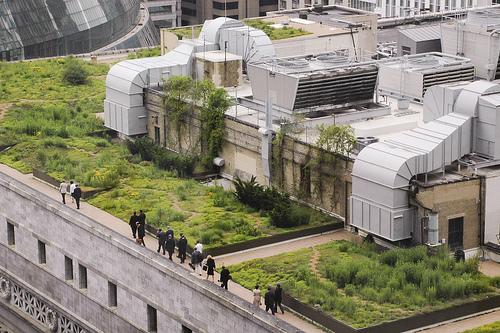The southwest German city of Freiburg serves as a laboratory for a sustainable future city.
Freiburg, a city of about 230,000 inhabitants, was an early adopter of solar energy and the types of urban planning that you'd expect to see in a place that bills itself as "Green City." Freiburg Mayor Dieter Salomon even claims that the city's renewable energy industry employs about 12,000 local workers and contributes a substantial sum to the regional economy of the German state of Baden-Württemberg.
The city is also no slouch at promoting itself and its model of a future Green City. Mayor Salomon showed up at a July solar conference in San Francisco to promote Freiburg's vision of a sustainable future and to swap lessons learned with counterparts from the Bay Area and Southern California. Salomon and other promoters of Freiburg's blueprint for future cities also claimed at the conference that sustainability has matured into a "business opportunity."
Whether Freiburg's decidedly utopian "Cluster Green City" model can be duplicated elsewhere remains unclear, but the city's commitment to sustainability at the very least provides a template for how future cities should be organized and how they can leverage renewable energy and other emerging technologies.
Other cities, most notably Chicago, are attempting to follow Freiburg's lead. The City of Broad Shoulders boasts a growing number of public and private buildings topped with "green" roofs designed to absorb heat in the summer and reduce a major component of urban power usage: air conditioning. Chicago's largest green roof, spanning some 25 acres, is touted as the largest on the planet. Chicago also is investing heavily in related initiatives, like reducing storm water runoff using permeable paving materials and simple techniques like creating rainwater catch basins in new curbing.
In an earlier time, when city managers didn't have to worry about "heat events," the roofs of black-topped office buildings could often reach nearly 170 degrees in the summer. Chicago's green roofs peak out at about 90 degrees on the hottest summer days, city managers say. The savings on cooling is so far negligible, but Chicago is now requiring green rooftops on any structure built with city funds. Optimists estimate the potential air conditioning savings could approach hundreds of millions of dollars.
Freiburg and Chicago have taken very different approaches to sustainability. What works for the relatively smaller German city probably won't fly in the third largest city in the United States. The point here is to evaluate different approaches for making cities more livable, then execute based on which approach provides the biggest bang for the buck (or euro). The Germans have long excelled at this -- everything from recycling trash into pellets used as fuel in power plants to large solar thermal installations used to store the sun's energy in the form of hot water, the simplest of phase changes.
Over in the US, Chicago has decided to make the investments required to reduce the cost of cooling its many skyscrapers and other office buildings. How long it will take before the city realizes a significant return on that investment is hard to say. But both Chicago and Freiburg seem willing to bet that theirs is a model for the future.
Related posts:
— George Leopold, Executive Editor, EE Times


No comments:
Post a Comment